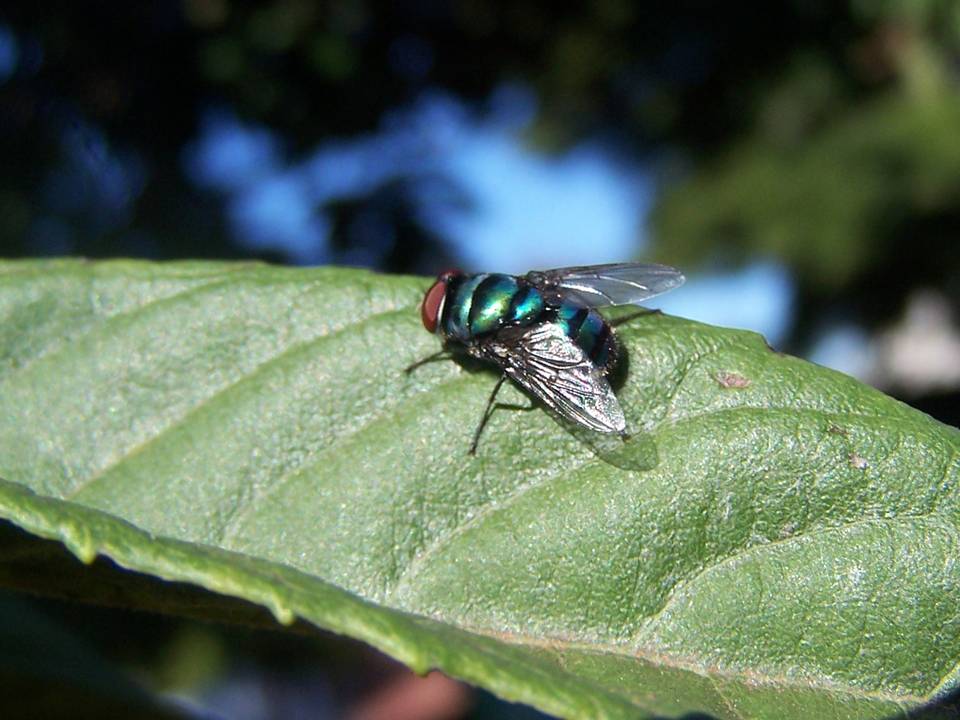

We are very grateful to Dr Sergio Ibañez-Bernal for the identification of the images
Designed by Paul Smith 2006. This website is copyrighted by law.
Material contained herewith may not be used without the prior written permission of FAUNA Paraguay.
Photographs on this page were taken by Paul Smith and are used with their permission.
 | FIGURE 1 |
|
FIGURE 1 - Unidentified sp. - Encarnación, Departamento Itapúa (Paul Smith June 2008).
CALLIPHORIDAE - BLOW FLIES
These are the typical large metallic flies frequently referred to as "Bluebottles" or "Greenbottles". In fact the family is not monophyletic, and a revision of their systematics is urgently required. The common name Blow Fly is an old English name in reference to the distasteful habit of these flies of laying their eggs on raw meat. Such meat infested by maggots was formerly referred to as "fly blown" and so the flies themselves became Blow Flies - they even get a mention in Shakespeare. Adults are attracted to the smell of rotten meat and plants with a similar strong odour. There are about 1100 species worldwide, but only 230 or so in the Neotropics.
Characteristics
The characteristics and arrangement of hairs are used for specific identification in this family. All blow-flies have bristles located on the meron. The main characteristic of this family is the presence of two notopleural bristles and a hindmost posthumeral bristle located lateral to pre-sutural bristle.Antennae are three-segmented and aristate, the second segment being distinctly grooved. On the wings ein Rs 2-branched and the frontal suture present, and well developed The thorax has the continuous dorsal suture across the middle, along with well defined posterior calli. The post-scutellum is absent or weakly developed. The costa is unbroken and the sub-costa is apparent on the insect.
Life Cycles
Female blow flies lay a clutch of 200 or so eggs, though they are able to lay a total of 2000 or so in their lifetime. Typically they are attracted to rotten meat, and one theory holds that they require high levels of protein in order to produce their eggs - rotten meat therefore simultaneously serves as a place to lay and a source of protein for the female. Hatching takes about 8 hours and there are three instars. The larvae excrete proteolytic enzymes which helps to break down the meat and use their grinding mouth hooks to devour it. Growth rate depends to a large degree on the availability of food and temperature. When ready to pupate they leave the corpse and burrow into the ground, emerging as an adult 7 to 14 days later.
Click on the images to enlarge them.

